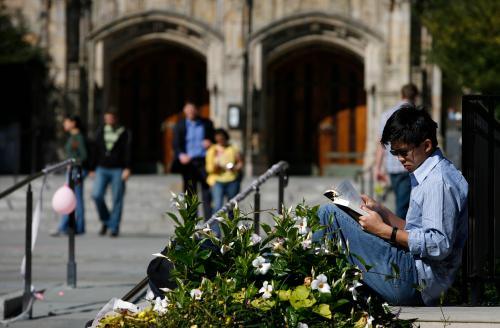The Obama Administration recently announced a new experimental initiative that, for the first time, will allow non-accredited institutions to gain access to the federal student aid program. This initiative, which will be limited to 10 experimental sites, will make it possible for students to use Pell grants and federal student loans to finance investments in education at accredited colleges and universities that make extensive use of new and innovative models that haven’t yet received a stamp of approval from the system of accreditation – such as MOOCs, which are becoming increasingly popular alternatives. Currently, students are only able to use federal loans at accredited institutions. However, some of these institutions are utilizing educational services from non-accredited providers as part of their curriculum. But current regulations limit this practice. Institutions are not able to have programs where more than 50 percent of the curriculum is provided by a non-accredited partner. This restriction will be waived at the institutions that are selected to participate in this experiment, effectively opening access for federal financial aid to a select group of non-accredited institutions operating in partnership with accredited institutions.
This small, but welcome, step towards transforming the accreditation system gives a green light to innovations that have the potential to sharply reduce costs and improve student outcomes at the same time. Implicit in this change is the recognition that the current system of accreditation is falling short. Our system of higher education serves a very diverse set of students with needs that are changing quickly over time. As such, we need a system of accreditation that will support a variety of pathways for skill development and that can embrace innovation. Unfortunately, the current system of accreditation has functioned as a barrier to the development of innovative business models that could provide valuable alternatives to the traditional models of higher education.
There are a growing number of instances in which innovative models are already proving their worth. In some cases – such as Arizona State University’s partnership with edX and Georgia Tech’s $7,000 master’s degree partnership with Udacity – accredited institutions have been making use of new educational technologies as part of their curriculum. In these cases, massive open online courses (MOOCs) and programs from external suppliers – such as “boot camps” for teaching computer programming – have replaced traditional coursework, reducing costs and arguably increasing quality. There have even been examples, such as Western Governors University, to combine entirely online degrees with achievement based on competency measures rather than traditional credit hours. But all these innovations have required often difficult negotiations with accreditors. This new initiative will make it easier for the pilot institutions to experiment further with these types of arrangements and could pave the way for other creative approaches.
While the Administration’s announcement is a step in the right direction, it’s still only a very small step toward reform. Legislative changes, which may be on the horizon, will be necessary for any large-scale, systemic change. A number of policy makers, including Senate Education Committee chairman Lamar Alexander, Utah Senator Mike Lee and Senators Marco Rubio and Michael Bennet, have already developed proposals for reform. Fortunately the Administration also appears poised to take additional executive actions to require accreditors to focus more on student outcomes and not just supply-side criteria, responding in part to the fact that some accredited institutions that have dismal graduation levels.
While the primary objective of the federal aid program is to encourage enrollment (by both providing financing through debt and lowering the cost of attendance with grants), the allocation of aid must also minimize both the extent to which students spend grant money on degrees that don’t pay off and borrowers taking on debt that they won’t be able to repay. This objective helps protect individual borrowers from making poor investments in their education and ensures efficient use of taxpayer dollars.
Accreditation is currently a part of the mechanism for determining eligibility for federal student aid. In theory, accreditation would ensure that an institution was providing educational services that were a good investment both for the individual and the taxpayer. Unfortunately, it hasn’t always worked that way. Meanwhile, innovative programs offering valuable services to their students are excluded from the federal aid program because they do not meet the traditional requirements for accreditation. Clearly, a better mechanism for determining aid eligibility is needed.
One potential mechanism for determining entry into the federal aid program is autonomous viability. In other words, if an institution is able to recruit students and sustain their business model without federal aid, then it’s reasonable to assume that the institution offers the opportunity for the type of investment that the federal aid system ought to be supporting. However, that’s a pretty high bar and it also creates an environment in which disadvantaged students are the last to have access to innovative programs. Clearly more thought is needed on this issue, but we’re pleased to see that the Administration has taken a step forward in this important conversation.
The Brookings Institution is committed to quality, independence, and impact.
We are supported by a diverse array of funders. In line with our values and policies, each Brookings publication represents the sole views of its author(s).







Commentary
Obama’s college accreditation reform: A welcome first step
October 27, 2015